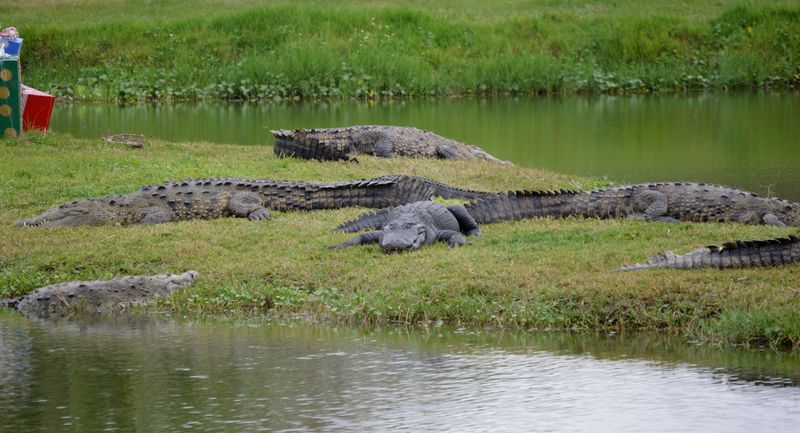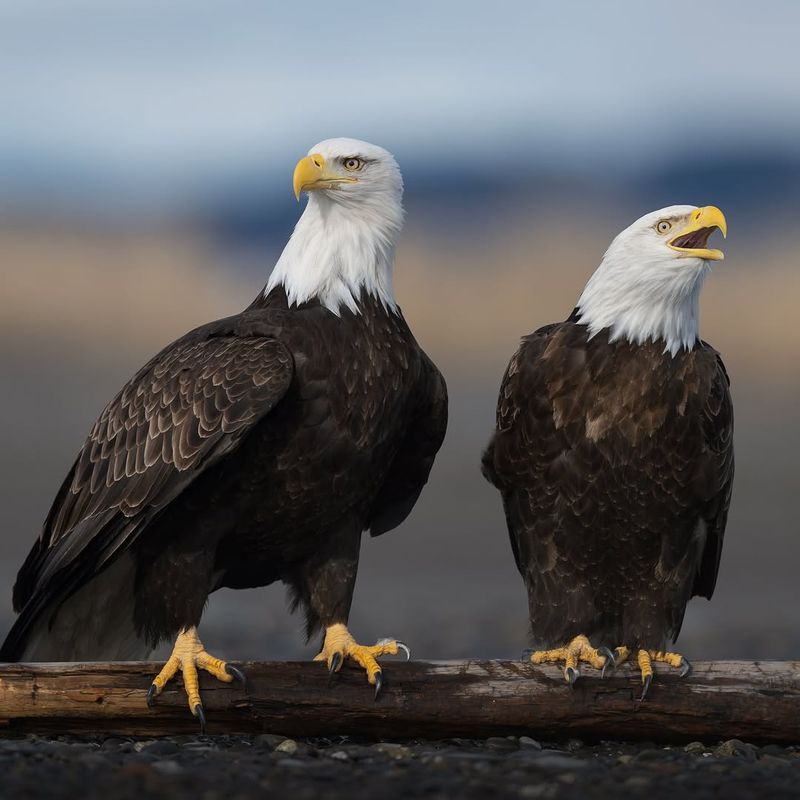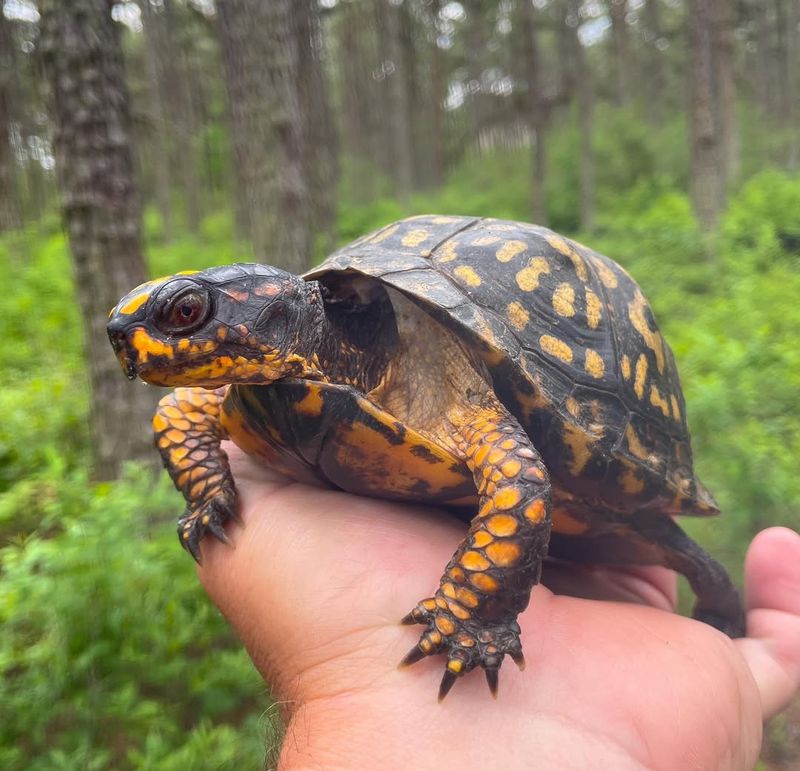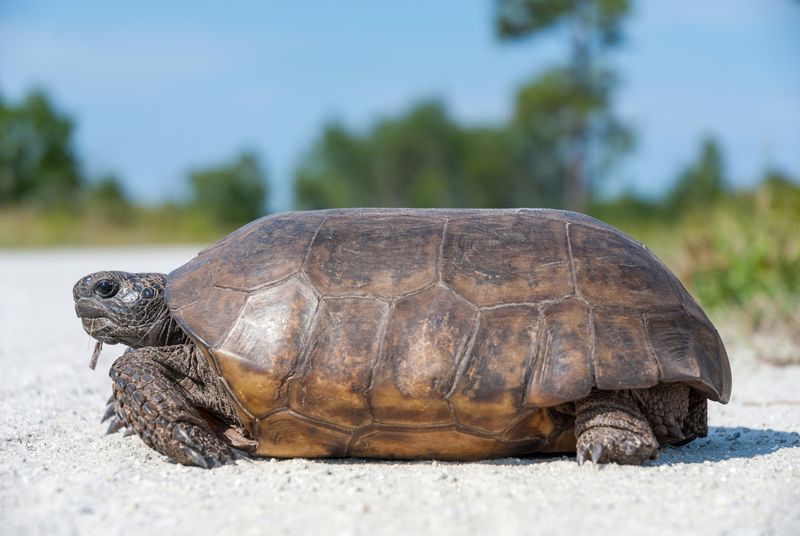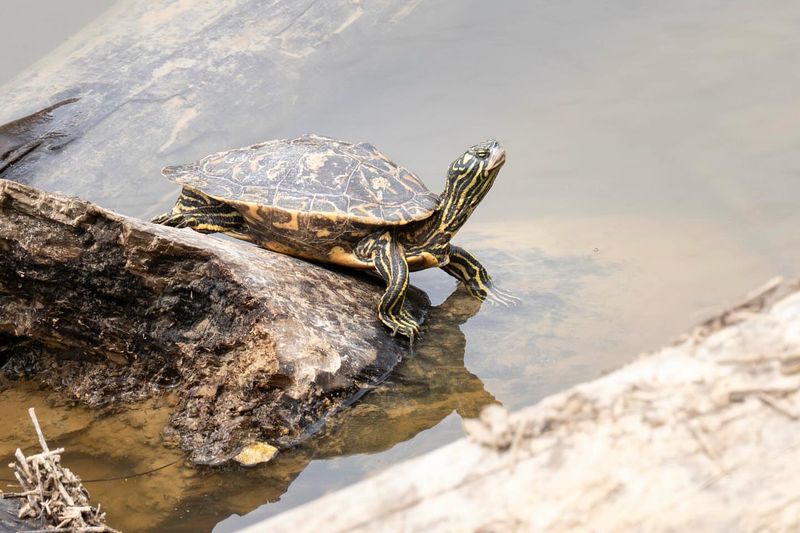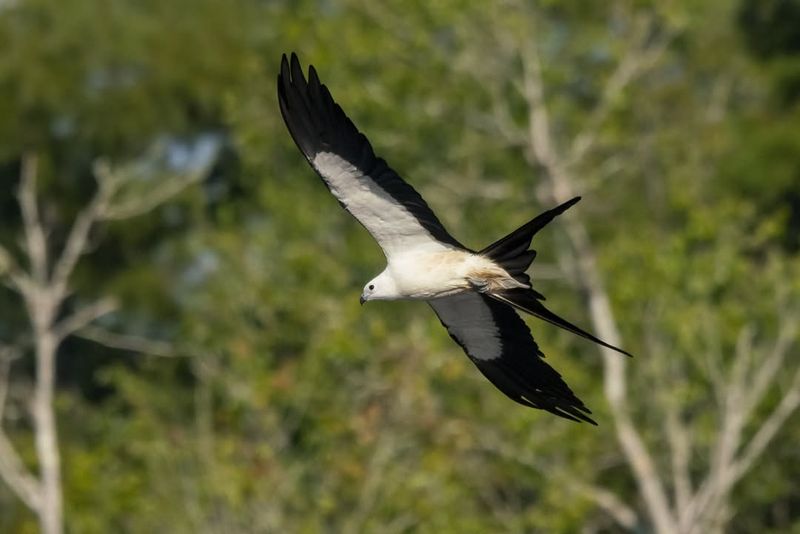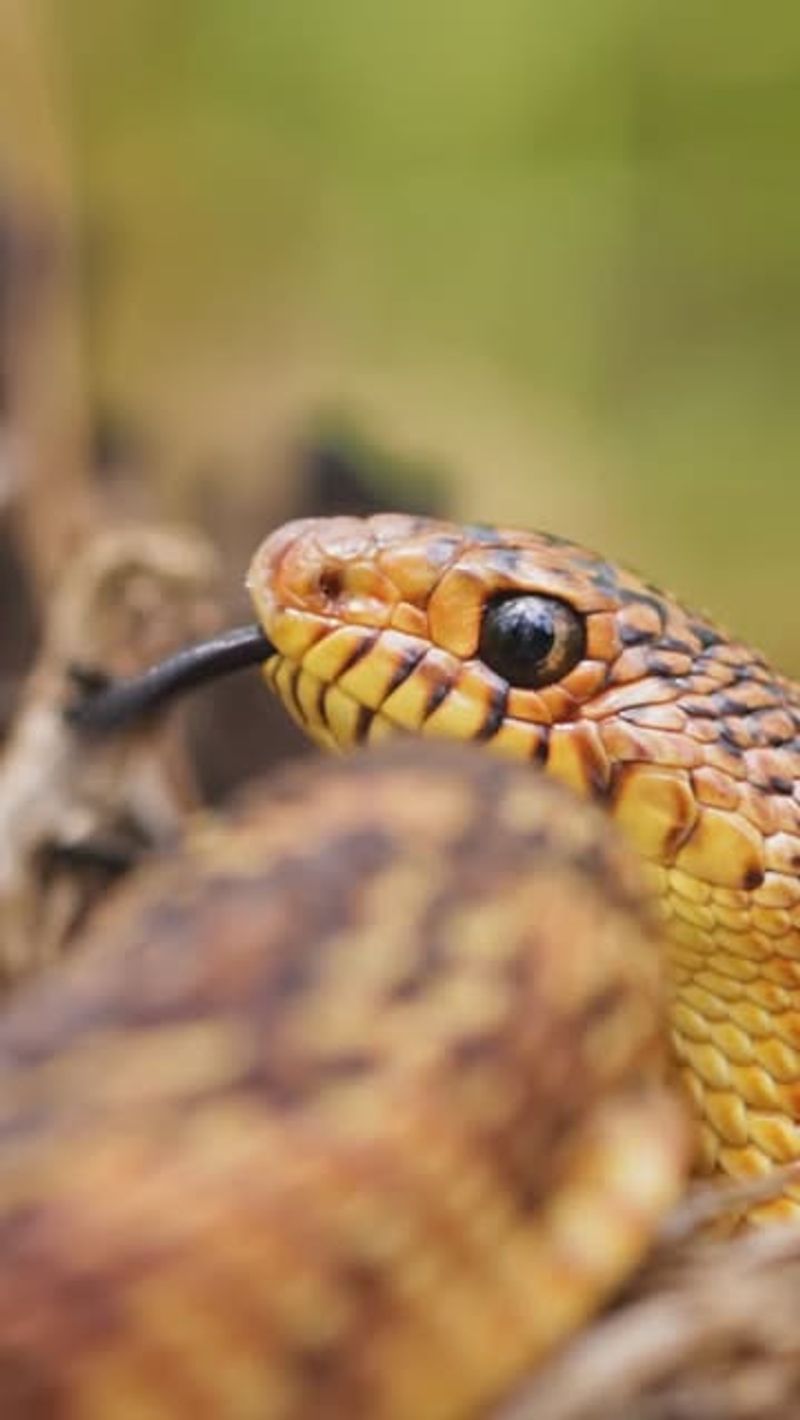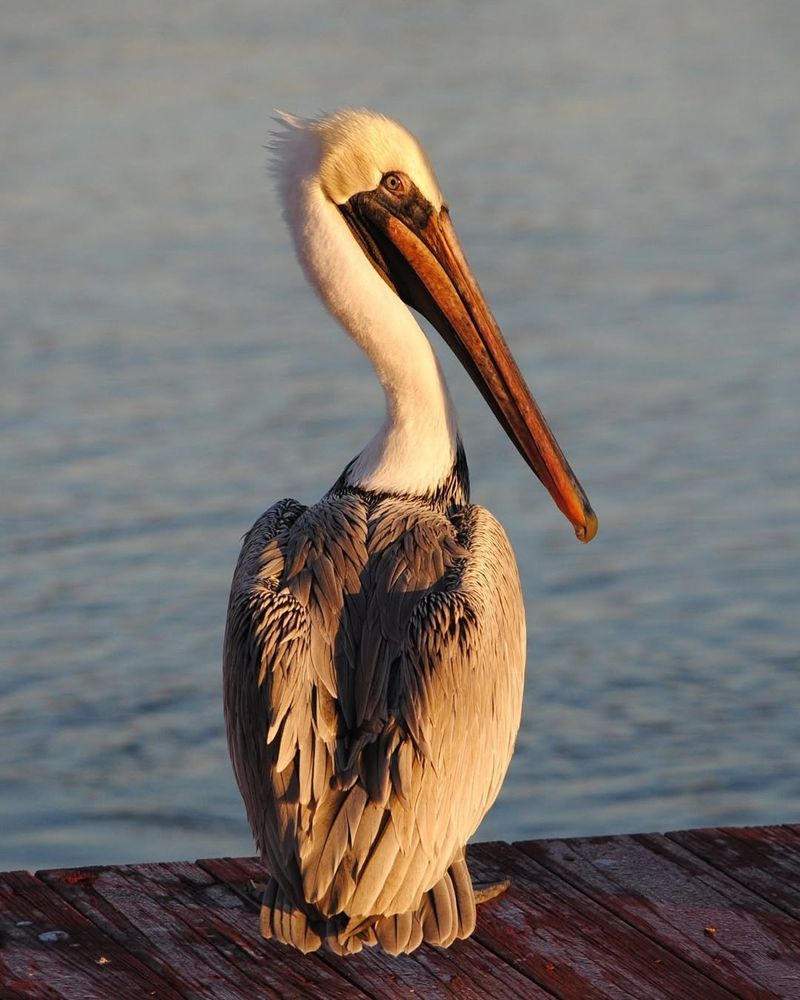Louisiana wildlife loves popping into yards unannounced, and some species come with strict rules. I once spotted one on my porch and almost intervened before realizing it was protected.
These creatures wander where they please. Knowing who they are keeps your interactions smooth and drama-free.
1. American Alligator
With jaws powerful enough to crush a turtle shell, the American alligator reigns as Louisiana’s most iconic reptile. Spotting one sunbathing along a murky bayou might seem thrilling, but taking one home is absolutely forbidden without special permits.
Louisiana law protects these ancient predators because they help control fish and nutria populations. Alligators also create “gator holes” that provide water sources for other animals during dry seasons.
If you encounter one in the wild across Louisiana, admire it from a safe distance and snap a photo instead of getting too close.
2. Bald Eagle
Once nearly extinct, bald eagles have made an incredible comeback throughout Louisiana and the entire nation. Seeing one soaring overhead with its striking white head and massive wingspan is unforgettable, but federal law strictly prohibits removing these majestic birds from the wild.
Even picking up a fallen feather can land you in serious legal trouble. Bald eagles are protected under multiple federal acts because of their symbolic importance and ecological role.
Louisiana residents should celebrate spotting these magnificent raptors by reporting sightings to wildlife officials instead.
3. Eastern Box Turtle
Painted with vibrant yellows and oranges, the eastern box turtle looks like nature’s artwork crawling through Louisiana’s woodlands. Many folks find these charming reptiles crossing roads or exploring gardens, but removing them from their habitat is illegal.
Box turtles have incredible homing instincts and can become stressed when relocated. Louisiana protects them because their populations have declined due to habitat loss and illegal pet trade.
If you find one in danger, move it safely across the road in the direction it was heading, then let it continue its journey.
4. Louisiana Black Bear
Roaming through thick forests and swampy areas, Louisiana black bears are making a remarkable recovery after nearly disappearing. These powerful omnivores can weigh over 400 pounds and are protected under both state and federal regulations.
Removing or harming a black bear in Louisiana carries hefty fines and possible jail time. Wildlife officials work hard to protect bear habitat and monitor population growth across the state.
If you’re lucky enough to spot one during a Louisiana hiking trip, keep your distance and secure any food to avoid attracting them to campsites.
5. Red-Cockaded Woodpecker
Tapping away at old pine trees, the red-cockaded woodpecker creates homes not just for itself but for dozens of other species. This small bird with a distinctive black-and-white pattern is federally protected as endangered throughout Louisiana.
Unlike most woodpeckers, these birds only nest in living pine trees infected with a fungus that softens the wood. Removing them or disturbing their nesting sites violates federal law and can result in serious penalties.
Louisiana’s pine forests depend on these industrious birds, so protecting them helps entire ecosystems thrive beautifully.
6. Gopher Tortoise
Digging burrows that can stretch 40 feet long, gopher tortoises are nature’s apartment builders for over 350 other species. Found in Louisiana’s sandy, upland areas, these slow-moving reptiles face threats from habitat destruction and illegal collection.
State law protects gopher tortoises because their burrows provide shelter for snakes, frogs, insects, and small mammals. Taking one from the wild disrupts entire underground communities that depend on these engineering experts.
If you spot one in Louisiana, appreciate how this humble tortoise creates homes for so many neighbors beneath your feet.
7. Ringed Map Turtle
Basking on logs with intricate patterns decorating their shells, ringed map turtles add beauty to Louisiana’s waterways. These aquatic reptiles prefer rivers and streams with plenty of snails, which make up most of their diet.
Louisiana regulations prohibit collecting these turtles because populations have declined from habitat degradation and pet trade demand. Map turtles need clean water and specific basking spots to survive, making them indicators of environmental health.
Watching them slide gracefully into the water when startled is a Louisiana treasure worth preserving for future generations to enjoy as well.
8. Swallow-Tailed Kite
Gliding gracefully through Louisiana skies, swallow-tailed kites look like flying works of art with their deeply forked tails and contrasting black-and-white feathers. These elegant raptors visit Louisiana during breeding season, hunting insects and small reptiles over wetlands.
Federal protection means you can’t capture, harm, or keep these birds under any circumstances. Louisiana’s cypress swamps provide perfect nesting habitat where they build stick nests high in treetops.
Birdwatchers travel from across the country to witness these acrobatic hunters performing aerial ballet over Louisiana’s beautiful landscapes each spring.
9. Alligator Snapping Turtle
Lurking on muddy bottoms with mouths wide open, alligator snapping turtles use a pink, worm-like appendage on their tongues to lure fish. These prehistoric giants can live over 100 years and weigh more than 200 pounds in Louisiana waters.
State regulations strictly protect them from collection because decades of overharvesting devastated populations. Their slow reproduction rate means populations recover extremely slowly once damaged.
Encountering one of these armored titans in a Louisiana bayou reminds us why protecting ancient species matters so much for biodiversity.
10. Louisiana Pine Snake
Slithering through Louisiana’s longleaf pine forests, the Louisiana pine snake is one of the rarest snakes in North America. With rusty-brown blotches along its back, this non-venomous constrictor spends much time underground hunting pocket gophers.
Federal endangered species protection makes removing these snakes a serious crime. Habitat loss has pushed them to the brink, with only small populations surviving in Louisiana and Texas.
Conservation programs in Louisiana work tirelessly to restore pine forests and protect remaining snake populations from extinction, giving hope for recovery.
11. Brown Pelican
Plunging headfirst into Louisiana’s coastal waters, brown pelicans are fishing experts with expandable throat pouches that hold their catch. Once nearly wiped out by pesticide poisoning, these charismatic seabirds have rebounded thanks to conservation efforts.
State and federal laws protect them from collection or harm. Louisiana designated the brown pelican as its state bird, recognizing its importance to coastal ecosystems and culture.
Watching these skilled divers hunt along Louisiana beaches and bayous showcases one of conservation’s greatest success stories worth celebrating and protecting always.


